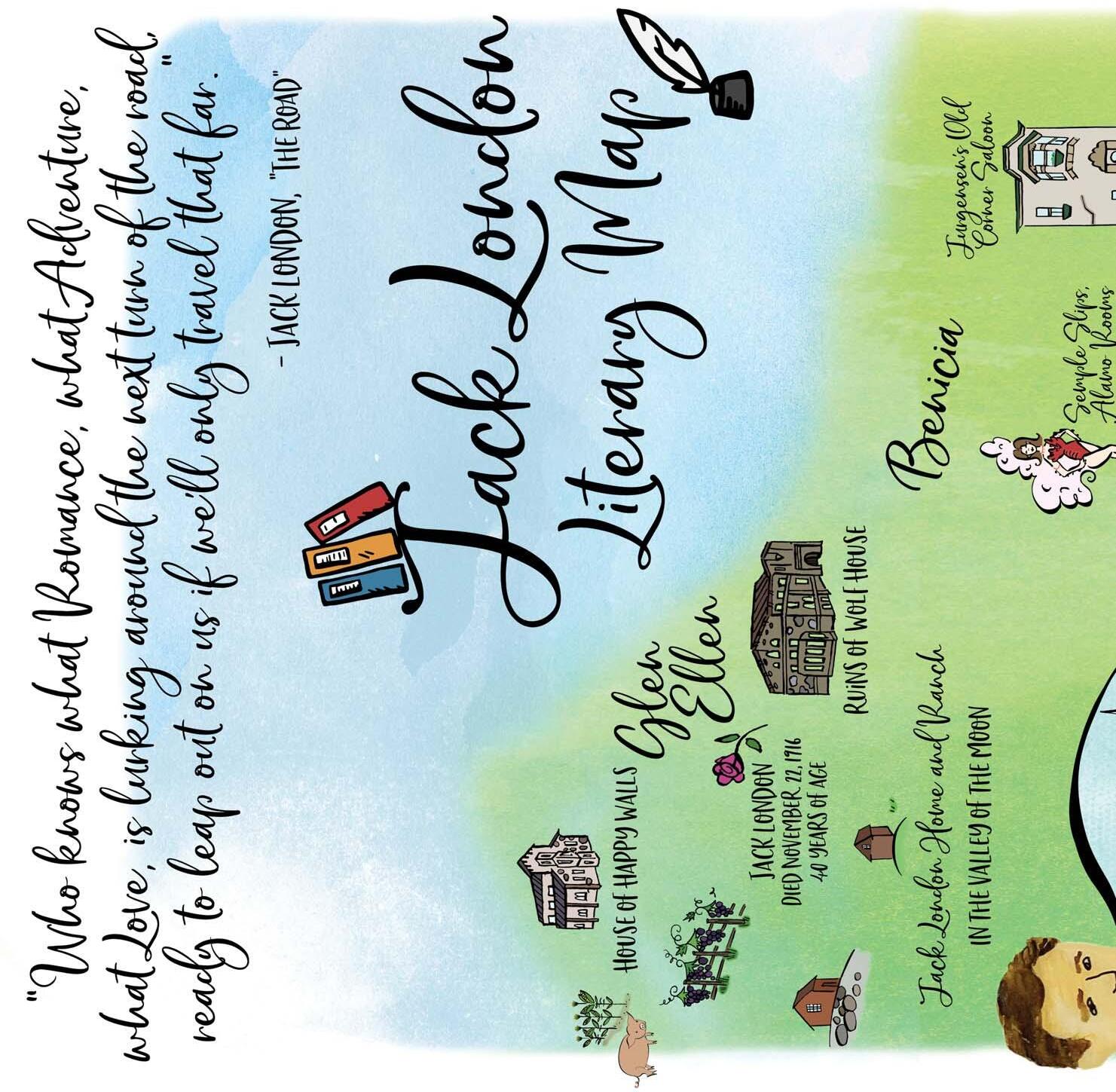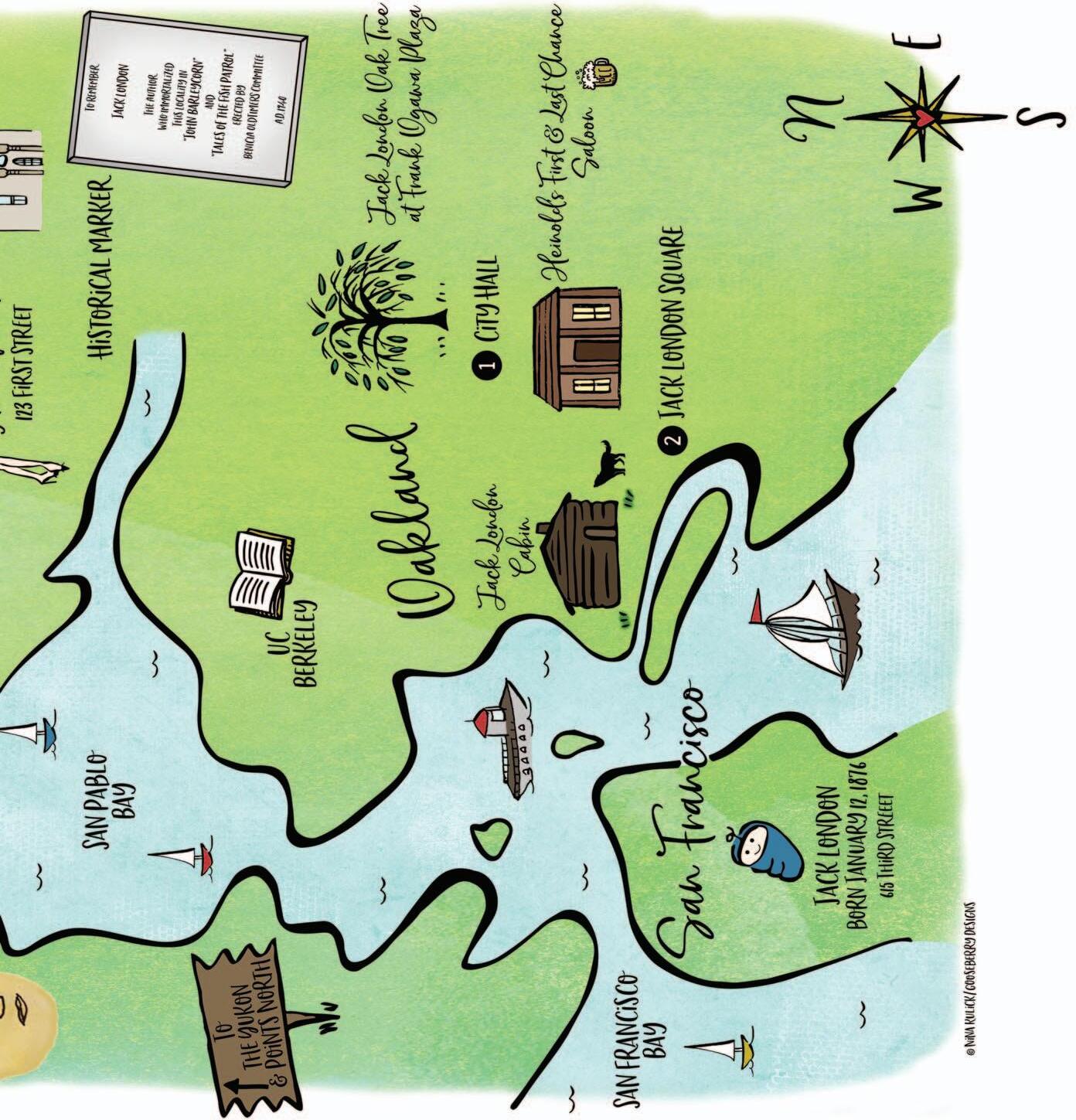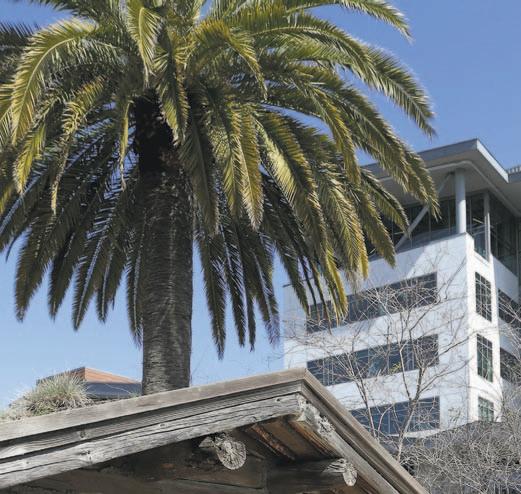
3 minute read
Jack London was here Visit the favorite haunts of the Bay Area’s early literary star
STORY BY MARTHA ROSS
PHOTOS BY JANE TYSKA/STAFF

The Bay Area has long been home to famous writers of every genre, but Jack London was one of its original literary stars.
Born in San Francisco, the best-selling writer of “White Fang” and “Call of the Wild” grew up on the streets and waterfronts of Oakland and Benicia. He discovered books at the Oakland Library and found adventure and inspiration for many of his masterpieces right here.
Follow London’s footsteps across the Bay Area, and you’ll enjoy beautiful scenery and local culture as well as literary history in locations as varied as a historic Oakland waterfront saloon and Santa Clara’s Carmelite Monastery. The latter, a ranch owned by Judge Hiram Graham Bond from 1895 to 1909, was the starting location for “Call of the Wild,” and the Bond family dog inspired the book’s Buck. Here are a few to visit.

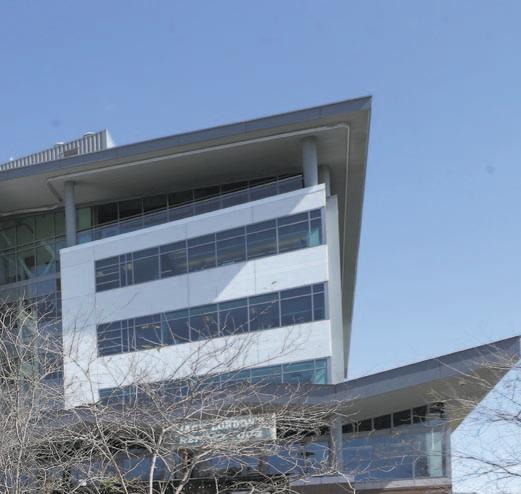

Inquisitive visitors peer inside a replica of the cabin the author inhabited while prospecting for gold in the Klondike.

JACK LONDON
JACK LONDON OAK TREE, OGAWA PLACE, OAKLAND
This famous live oak wasn’t planted just to commemorate the city’s namesake. The tree honors London, who lived in Oakland on and off from early childhood until 1905, when he moved to his Glen Ellen ranch. The oak was rededicated in 2017 with a new plaque. London likely would have been amused by the City Hall location; the Socialist Party member was arrested here in 1897 at a free speech protest.
HEINOLD’S FIRST AND LAST CHANCE SALOON, JACK LONDON SQUARE, OAKLAND
Oakland’s waterfront square is the East Bay epicenter of Jack London appreciation. Heinold’s famous bar, constructed from lumber from an old stern-wheel paddle steamer, opened in 1884. London studied here as a schoolboy in the late 1800s. Owner John Heinold became so fond of his brilliant young customer that he loaned him tuition money for UC Berkeley; London only lasted a semester there. But the saloon and its patrons appear in “The Sea Wolf” and other London tales. 48 Webster St., Oakland; http:// heinoldsfirstandlastchance.com.
Last Chance Saloon founder John Heinold, right, was an early supporter of Jack London’s short-lived academic pursuits.

Customers at Heinold’s famous sloping bar, below, don’t seem to mind a little slant.
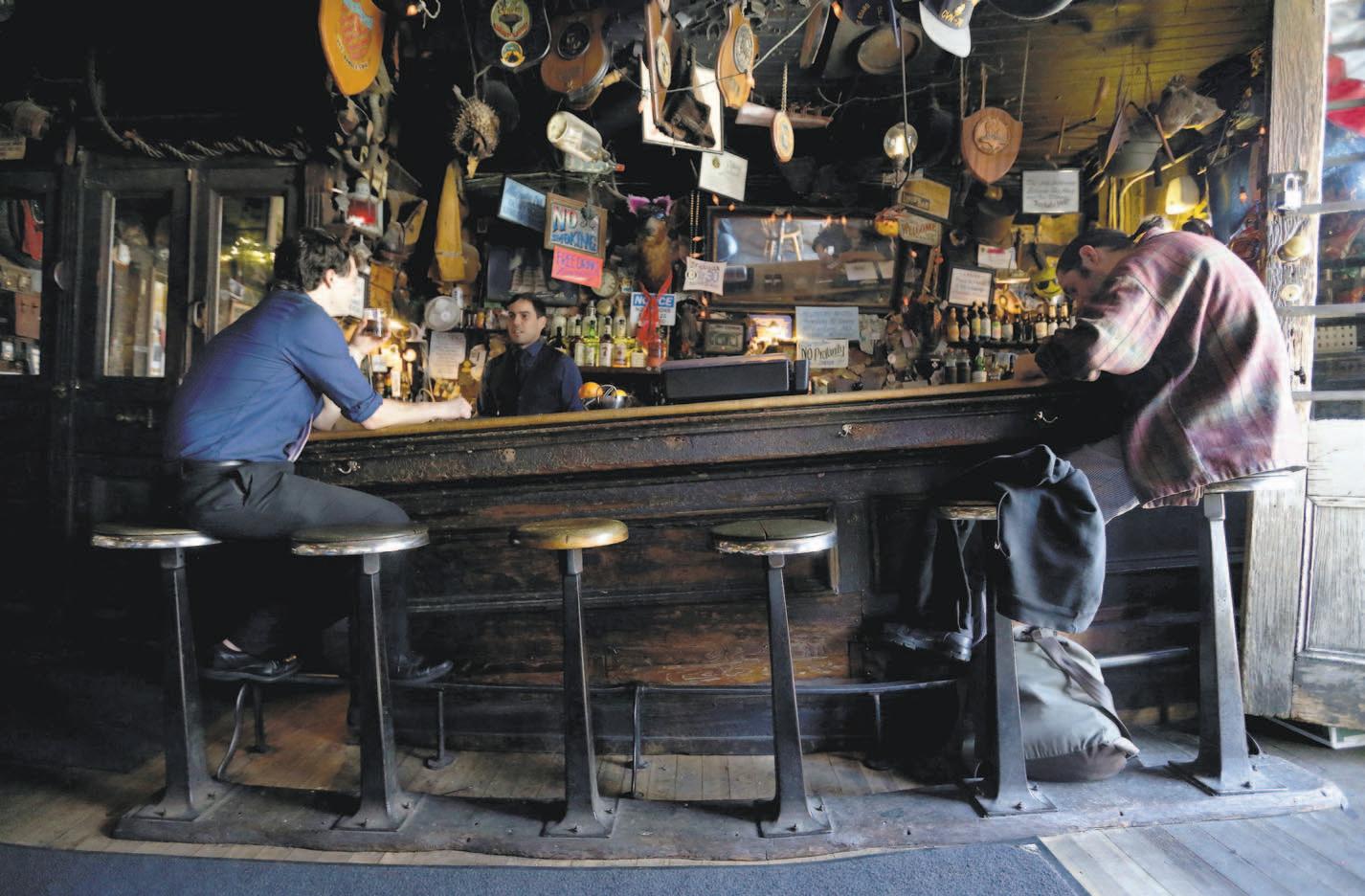
JACK LONDON CABIN, OAKLAND
Follow the bronze wolf tracks across Jack London Square for more historic sights. The cabin London occupied during his 1897 gold-prospecting adventure in the Klondike was dismantled some 60 years later, and its logs were used to build this replica that stands near Heinold’s First and Last Chance Saloon; www.visitoakland. com/listing/jack-london-cabin/555/
JACK LONDON STATUE, OAKLAND
Stop by this life-size bronze statue at the end of Broadway to read the author’s famous words, engraved on the plaque at its base: “I would rather be ashes than dust. I would rather that my spark should burn out in a brilliant blaze than it should be stifled by dry rot. I would rather be a superb meteor, every atom of me in magnificent glow, than a sleepy and permanent planet. The proper function of man is to live, not to exist.”
LONDON’S BIRTHPLACE, SAN FRANCISCO
A plaque marks the location of the South of Market home where London was born on Jan. 12, 1876. The house at Third and Brannan streets was destroyed in the fires that followed the 1906 earthquake. When he was 30, London traveled from his Glen Ellen ranch to San Francisco to cover the aftermath of the earthquake for Collier’s magazine.
JURGENSEN OLD CORNER SALOON, BENICIA

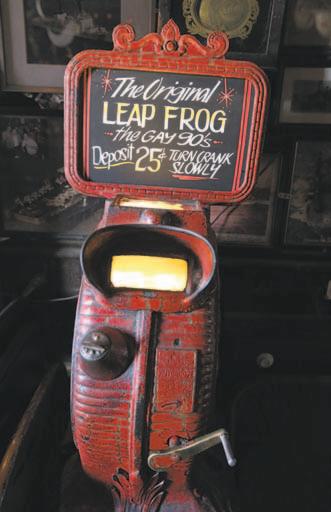
In his teens, London worked as an oyster pirate — the term given to poachers who raided oyster beds on San Francisco Bay — and lived near the waterfront of California’s one-time capital. Originally located at the foot of First
Street, the Jurgensen saloon was a favorite hangout for the teenage London, providing material for “John Barleycorn,” his memoir about his boozy misadventures. The book includes London’s harrowing tale of drunkenly stumbling off a sloop docked at the wharf and being swept away by the tides in Carquinez Strait, where he was rescued by a Greek fisherman.
ALAMO ROOMS, BENICIA
During London’s time in Benicia, this boarding house and bordello was located on property at the end of First Street known as Semple Slips. The building now houses Sailor Jack’s seafood restaurant. Look for a marker commemorating London’s time in Benicia on a boulder in front of the historic train depot, which now serves as the headquarters for the Benicia Main Street organization.

JACK LONDON STATE PARK, GLEN ELLEN
Using the proceeds from his blockbuster 1903 novel, “The Call of the Wild,” and other works, London and his second wife,
Charmian Kittredge, purchased nearly 130 acres on the slopes of Sonoma Mountain to establish their Beauty Ranch in 1905. Today, it’s a state park where visitors can hike, bike and visit London’s home and ranch buildings. Highlights include: fire-ravaged Wolf House and London’s winery cottage, where he lived and wrote until his death in 1916 at age 40. You’ll also find the House of Happy Walls, the house Charmian built and lived in after London’s death; the Londons’ grave sites; and the winery ruins, where musical performances are staged every summer. https://jacklondonpark.com.
